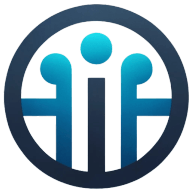This interview is with Louis-Victor Jadavji, CEO at Taloflow.
Louis-Victor Jadavji, CEO, Taloflow
Louis-Victor, welcome to ITDirector.io! For our readers who may not be familiar, could you tell us a bit about yourself and your journey to becoming CEO of Taloflow?
I've been an entrepreneur for over a decade. I've dabbled in everything from natural gas compressors to car restoration to 3D printing to computer vision to cloud cost management, finally landing on enterprise software vendor selection. A common thread through all my experiences has been the sheer frustration of picking the right tools for practically any technology stack. It's always been a process that takes longer than it should, and you sometimes still choose the wrong thing.
You've personally evaluated thousands of technology vendor features – that's incredible! Could you share a pivotal moment or experience that solidified your passion for helping companies navigate the complex world of tech stacks?
I have a deep passion for applying disruptive technologies, and AI is one of them. The pivotal moment was when a Fortune 500 company came to us with a pressing need to evaluate solutions and present a decision to executive leadership within a three-day timeline in a category we had never dealt with. Getting this done was an important proof point toward demonstrating that virtually any use case in any category could be addressed using human-in-the-loop AI.
With so many SaaS and developer tools available, what are some common pitfalls you see companies making when evaluating and selecting new technologies?
Firstly, the problem keeps worsening because it's easier than ever to launch a software business, and VCs keep funding hordes of them. Some common pitfalls are that companies do not spend enough time in the discovery phase and go for the more established names for convenience. Another is that they frequently do a poor job of gathering requirements because they don't know what to look for. Finally, vendors do a great job of being opaque about their capabilities in the demo phase.
You mentioned evaluating thousands of vendor features. Can you share a specific instance where a seemingly small or overlooked feature ended up having a significant impact on a company's decision-making process?
Of course. For example, a dozen object-storage vendors are out there promising bargain prices for storing data. It's generally true, but each has 'gotchas' that companies aren't wary of, like fair-use limits, high data-transfer fees, poor compatibility with the S3 API, long data-storage period requirements, etc. One customer was seriously considering a storage vendor with an S3 API that was too limited for their purposes. We pointed them in a better direction.
How important is it for companies to consider future scalability and integration needs during the evaluation process, even if their immediate requirements seem small?
It's paramount because these kinds of decisions have downstream effects. Especially in large enterprises, you need to be aware of stakeholder concerns across many teams. It can also get political. Different teams may be working on taking the company's technology stack in a completely different direction, so you need to make sure you have a good grasp of how things need to work together now and in the future.
What advice would you give to IT leaders who are feeling overwhelmed by the sheer number of options in the market? How can they streamline their evaluation process without getting bogged down?
This is the problem we're trying to solve at Taloflow. The best tips I can give for this environment are to press the vendors to connect you with solutions engineers (and not salespeople) earlier in the process, to find requirements templates online to speed up your data collection process, and finally, to run polls with peers in various Slack or LinkedIn groups and other forums.
From your experience, what role does company culture and internal processes play in successfully adopting and integrating new technologies?
There's no blanket answer as to what company culture and internal processes work best because it really depends on the company's stage and industry, as well as the velocity versus process needed for decision-making. I'd say they all value processes at the enterprise level, and for good reason. Poor stack decisions can be devastating, from noncompliance fines to many customer complaints. However, as I've seen, the best option is to have standardized templates (requirements, assessments, scoring, etc.) and dedicated liaisons between teams to coordinate decisions and provide big-picture visibility into what's in the pipeline.
Looking ahead, what emerging trends in the cloud, SaaS, or developer tools space are you most excited about, and why should IT leaders be paying attention to them?
The most exciting trend is AI everywhere. It's added a whole new dimension to software evaluations. IT leaders should pay attention to this because some vendors have a more ambitious AI roadmap than others, and most times, choosing the right vendor requires factoring in their pace of innovation.
Finally, what is one key piece of advice you would give to IT leaders who are striving to build future-proof tech stacks that can adapt to the ever-evolving technology landscape?
For future-proofing, portability is generally a good thing. We're seeing more switching in the cloud and infrastructure stack than you'd expect, especially in this economic environment where cost-saving opportunities must constantly be evaluated.
Thanks for sharing your knowledge and expertise. Is there anything else you'd like to add?
I'd love to hear from anyone with experience dealing with complex-stack decisions at scale.

